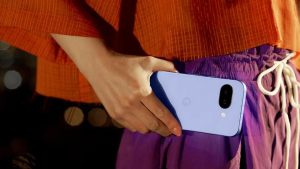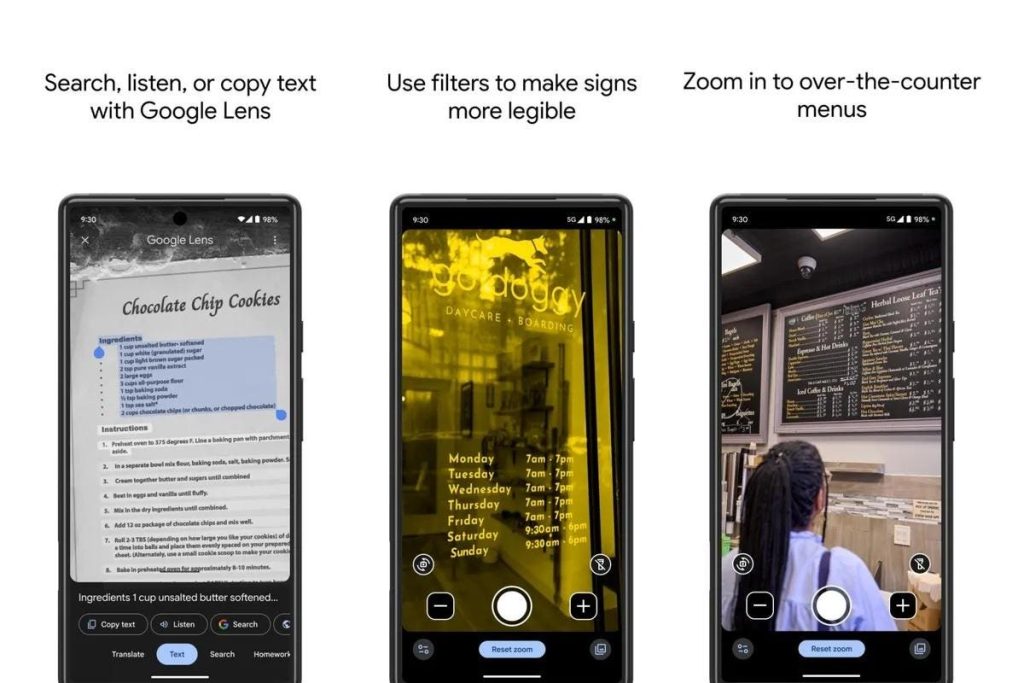“When it comes to creating accessibility products and tools, it’s absolutely essential to build with and for the [disability] community.”
That’s what Angelo Carino said to me in an interview conducted by email earlier this month about Google’s all-new Pixel Magnifier app, which the company released at the beginning of the month. The new app, available on Google’s Play Store, is billed in the app description as enabling users to “magnify small text, see object details, or zoom in on faraway text like street signs or restaurant menus behind a service counter.”
The software requires a Pixel 5 or newer device.
At a high level, Google’s approach with Android is different from Apple and iOS insofar as Pixel Magnifier is downloadable from the Play Store. By contrast, Apple’s own Magnifier app comes bundled with the system.
Carino, who works at Google as its group product manager of emerging products and Google devices and services, explained the company’s philosophy behind conceiving and developing Pixel Magnifier starts with the team itself. His group is tasked with “ensuring every product we build is built with inclusive design and accessibility in-mind throughout the development process,” while adding the group “[partners] with our experts across Google to put product inclusion and accessibility into practice in a systematic way so that all teams have knowledge and resources to leverage.” Ultimately, Carino described his team within Google is responsible for “disability and inclusion innovation across our portfolio of Pixel devices, and the differentiated experiences and services that accompany them” which he told me often involves “coming up with, building, testing, and shipping some delightful user experiences.”
This ethos, which Carino emphasized extends far beyond merely building accessible cameras, applies to “all of our Pixel devices and services, and [is considerate of] all intersectional dimensions of our users’ identity” which include characteristics like gender and more.
“Our internal framework aims to evaluate products throughout the design and development process around multiple dimensions of identity, with the goal of not only highlighting ways that the technology can be more inclusive, but also providing clear steps to achieve that,” Carino said. “Product inclusion and inclusive design builds on three key principles: (1) address the user; (2) start with equity; and (3) continually test and address the gaps. We apply these principles over the entirety of the life cycle, concentrating on four key inflection points: ideation and prototyping, user research, user testing, and launch and marketing.”
Of course, Pixel Magnifier makes use of the phone’s camera system. Carino said an overarching goal of his and the team was to build “the world’s most inclusive camera.” It’s a goal, he said, that requires a ton of collaboration and listening to feedback from members of the disability community. As Carino’s worked hand-in-hand with disability organizations such as the Royal National Institute of Blind People in the United Kingdom, as well as the National Federation of the Blind in the United States, Google learned a lot. Carino said “learned firsthand about the scenarios where having a magnifier is most important, and what would make the app most helpful.” He added Pixel Magnifier takes advantage of what he called the Pixel’s “advanced camera technology that was developed to take beautiful images and applies it to help users see the world around them with more clarity.” The Super Res Zoom feature, for instance, enables users to zoom tightly into an object without compromising image quality; the Pixel 8 Pro in particular has a 30× zoom. Likewise, Carino told me the phone’s AI Zoom stabilization steadies a person’s hand while using the live viewfinder.
For Google, accessible photography means a more accessible world.
“At Google, we build products for the world. The people we design for come from different places, ethnicities, socioeconomic positions and identities, including disability. With those varied backgrounds, come different preferences and contexts for use. We want our products to work well for everyone and invest heavily in building products that work for all users. Pixel and Google Camera are no exception,” Carino said. “For many people, being able to take photos throughout their days enables them to express themselves and their identities, and connect socially with others, and this is no different for blind people. Even before Guided Frame launched we heard from people from the Blind community about how they love taking pictures to capture important memories and share with their friends and communities. Capturing photos is a topmost use case for a phone, but it is one the industry has failed to make truly accessible for blind users for decades.”
Carino is especially proud of what Guided Frame has wrought for disabled people, telling me the company has received “an overwhelming amount of positive feedback from people around how much joy it’s brought them.” The adulation has inspired the Google to push harder on its mission in this realm, with Carino saying Google continues to partner with the Blind and low vision community on future advancements. “We saw there were so many other types of important photos people wanted to take beyond selfies including loved ones, pets, and meals which led us to this year’s update,” he said. “Alongside our other investments in accessibility features across many Google teams and user need spaces.”
Carino continued: “That’s why the Google team is committed to ensuring that the Pixel can help people with disabilities in their daily lives and also make social interactions more accessible.”
Carino expressed excitement for Pixel Magnifier’s future.
“We’re really excited to have the opportunity to leverage the new advances in Pixel’s camera to make the world and photography more accessible for people who are Blind or low vision,” he said of the tech’s outlook. “Our hope is both Magnifier and Guided Frame can be helpful tools for people in their daily lives, whether it’s trying to read a menu in a low-lit restaurant or taking photos of your friends while you’re spending time together. Our team is also thinking about more ways we can continue to make Pixel and Pixel’s camera even more accessible for the estimated 1.3 billion people worldwide who have a disability.”
Read the full article here










